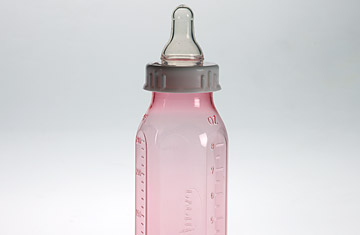
For years, a small but growing band of scientists has been raising concerns about the impact on human health of bisphenol A (BPA), a chemical used in plastic that mimics the effect of the hormone estrogen. BPA can be found in a wide variety of products, including some plastic bottles and the lining of aluminum cans, and it can migrate fairly easily into the human bloodstream. That means few of us escape exposure, if in small doses — in one survey, 93% of Americans tested positive for the chemicals. Concerned researchers point to animal studies that indicate that even low-dose exposure to BPA may be associated with a variety of ills, including cancer and reproductive problems. But defenders — most prominently the chemical industry itself — argue that the average dose of BPA is far too low to be toxic, and that in any case, there have never been human studies implicating the chemical as dangerous. So far that argument has carried the day — the Federal Drug Administration (FDA) last month announced that the BPA wasn't dangerous to human health in small doses, and declined to regulate it. (Tuesday, the FDA defended that position.)
The science may be changing, however. In a study published Sept. 16 in the Journal of the American Medical Association (JAMA), a group of researchers led by David Meltzer of the University of Exeter in Britain reviewed data from the U.S. government's comprehensive National Health and Nutrition Examination Survey, looking for any connections between BPA exposure and health problems. They found more than a few. The JAMA study indicates higher levels of BPA in urine — the simplest way to test for the chemical — was associated with higher incidences of cardiovascular disease, diabetes and liver enzyme abnormalities. The article represents the first large-scale study of BPA in a human population — and is sure to add to the controversy surrounding it. "This isn't just any old epidemiological study — this is a national survey," says Frederick vom Saal, a biologist at the University of Missouri and an outspoken opponent of BPA, who wrote an editorial accompanying the JAMA study. "This carries greater weight."
Compared with the quarter of the surveyed population (aged 18 to 74) with the lowest levels of BPA, the quarter who had the highest levels were more than twice as likely to report having cardiovascular disease or diabetes. But the study's authors take pains to point out that their research does not prove that BPA can cause these ills, but merely indicates that these disorders seem to occur more often in people with higher levels of the disease. To prove a cause-effect relation would require longitudinal studies that compare the effects of BPA in one group to a control group unexposed to the chemical — hard to do, given BPA's ubiquity. But the JAMA study is worrying enough. "The article says that the more of this chemical you have, the greater the risk," says vom Saal. "We understand how BPA causes these problems in animals, and the human study follows that." A recent study by the Yale School of Medicine provides even more cause for concern, showing that tests in primates found that BPA "causes the loss of connections of brain cells" that could lead to memory problems, and even depression.
